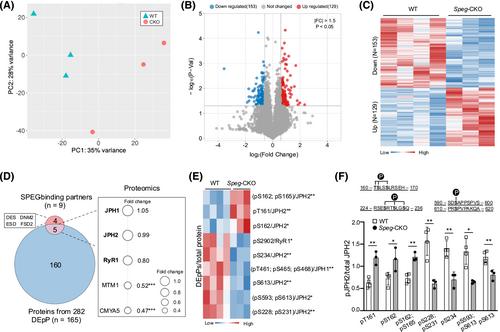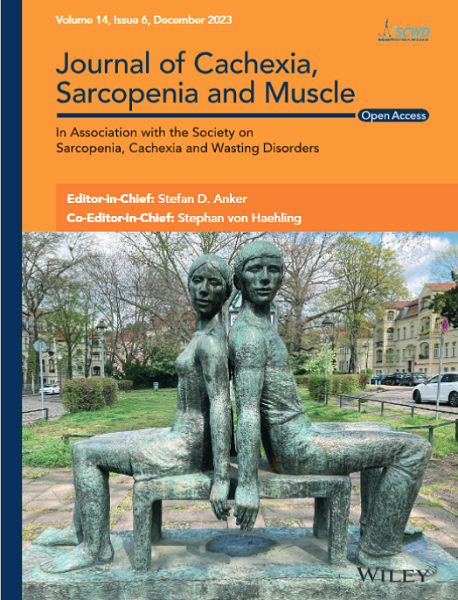Integrated multi-omics approach reveals the role of striated muscle preferentially expressed protein kinase in skeletal muscle including its relationship with myospryn complex
Abstract
Background
Autosomal-recessive mutations in SPEG (striated muscle preferentially expressed protein kinase) have been linked to centronuclear myopathy with or without dilated cardiomyopathy (CNM5). Loss of SPEG is associated with defective triad formation, abnormal excitation–contraction coupling, calcium mishandling and disruption of the focal adhesion complex in skeletal muscles. To elucidate the underlying molecular pathways, we have utilized multi-omics tools and analysis to obtain a comprehensive view of the complex biological processes and molecular functions.
Methods
Skeletal muscles from 2-month-old SPEG-deficient (Speg-CKO) and wild-type (WT) mice were used for RNA sequencing (n = 4 per genotype) to profile transcriptomics and mass spectrometry (n = 4 for WT; n = 3 for Speg-CKO mice) to profile proteomics and phosphoproteomics. In addition, interactomics was performed using the SPEG antibody on pooled muscle lysates (quadriceps, gastrocnemius and triceps) from WT and Speg-CKO mice. Based on the multi-omics results, we performed quantitative real-time PCR, co-immunoprecipitation and immunoblot to verify the findings.
Results
We identified that SPEG interacts with myospryn complex proteins CMYA5, FSD2 and RyR1, which are critical for triad formation, and that SPEG deficiency results in myospryn complex abnormalities (protein levels decreased to 22 ± 3% for CMYA5 [P < 0.05] and 18 ± 3% for FSD2 [P < 0.01]). Furthermore, SPEG phosphorylates RyR1 at S2902 (phosphorylation level decreased to 55 ± 15% at S2902 in Speg-CKO mice; P < 0.05), and its loss affects JPH2 phosphorylation at multiple sites (increased phosphorylation at T161 [1.90 ± 0.24-fold], S162 [1.61 ± 0.37-fold] and S165 [1.66 ± 0.13-fold]; decreased phosphorylation at S228 and S231 [39 ± 6%], S234 [50 ± 12%], S593 [48 ± 3%] and S613 [66 ± 10%]; P < 0.05 for S162 and P < 0.01 for other sites). On analysing the transcriptome, the most dysregulated pathways affected by SPEG deficiency included extracellular matrix–receptor interaction (P < 1e−15) and peroxisome proliferator-activated receptor signalling (P < 9e−14).
Conclusions
We have elucidated the critical role of SPEG in the triad as it works closely with myospryn complex proteins (CMYA5, FSD2 and RyR1), it regulates phosphorylation levels of various residues in JPH2 and S2902 in RyR1, and its deficiency is associated with dysregulation of several pathways. The study identifies unique SPEG-interacting proteins and their phosphorylation functions and emphasizes the importance of using a multi-omics approach to comprehensively evaluate the molecular function of proteins involved in various genetic disorders.


 求助内容:
求助内容: 应助结果提醒方式:
应助结果提醒方式:


